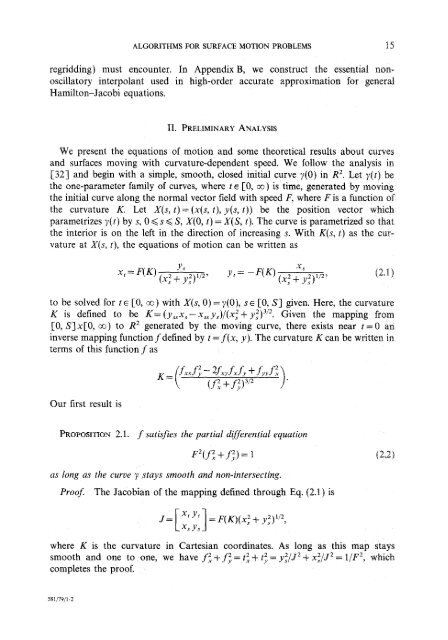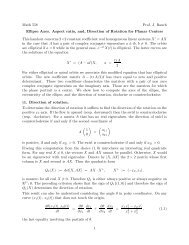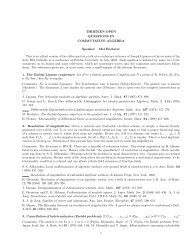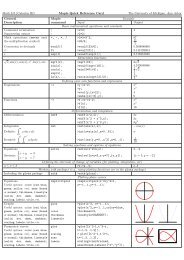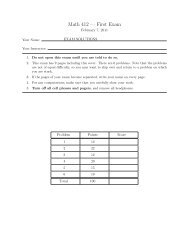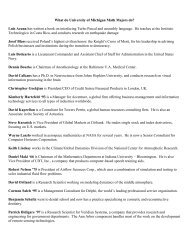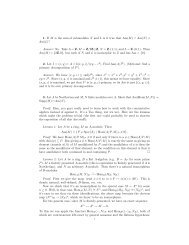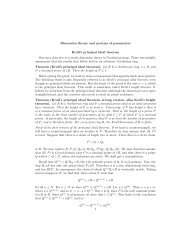Fronts Propagating with Curvature- Dependent Speed: Algorithms ...
Fronts Propagating with Curvature- Dependent Speed: Algorithms ...
Fronts Propagating with Curvature- Dependent Speed: Algorithms ...
You also want an ePaper? Increase the reach of your titles
YUMPU automatically turns print PDFs into web optimized ePapers that Google loves.
ALGORITHMSFOR SURFACE MOTIONPROBLEMS 15<br />
regridding) must encounter. In Appendix B, we construct the essential non-<br />
oscillatory interpolant used in high-order accurate approximation for ~enexai<br />
Hamilton-Jacobi equations.<br />
II. PRELIMINARY ANALYSIS<br />
We present the equations of motion and some theoretical results about curves<br />
and surfaces moving <strong>with</strong> curvature-dependent speed. We follow the analysis in<br />
[32] and begin <strong>with</strong> a simple, smooth, closed initial curve y(Q) in R2. Let y(t)<br />
the one-parameter family of curves, where t E [0, co) is time, generated by rn~vi~g<br />
the initial curve along the normal vector field <strong>with</strong> speed F, where Fis a function of<br />
the curvature K. Let X(s, t) = (x(3, t), y(s, t)) be the position vector w~i~b<br />
parametrizes y(t) by s, 0 d s < S, X(0, t) = X(S, t). The curve is parametrized so that<br />
the interior is on the left in the direction of increasing s. With K(s, t) as t<br />
vature at X(s, t), the equations of motion can be written as<br />
to be solved for t E [0, co) <strong>with</strong> X(s, 0) = y(O), s E [0, S] given. Here, the curvature<br />
K is defined to be K= (ySSx, - x,, y,)/(xs -I- ~3)““. Given the mapping from<br />
[O, S]x[O, co) to R2 generated by the moving curve, there exists near t =<br />
inverse mapping functionfdelined by t =f(x, y). The curvature K can be written in<br />
terms of this function f as<br />
Our first result is<br />
~oPosrTroN 2.1. f satisfies the partial differential equation<br />
as long as the curve y stays smooth and non-intersecting.<br />
Proof. The Jacobian of the mapping defined through Eq. (2.1) is<br />
J= x,yf = F(K)fx2 + yy<br />
L x, Ys I<br />
s 5 )<br />
where K is the curvature in Cartesian coordinates. As long as this map stays<br />
smooth and one to one, we have ft +fi = tt + t.: = y,2/J2 -I- x:/J2 = 1/F=, wIrich<br />
completes the proof.<br />
581/79/1-Z


